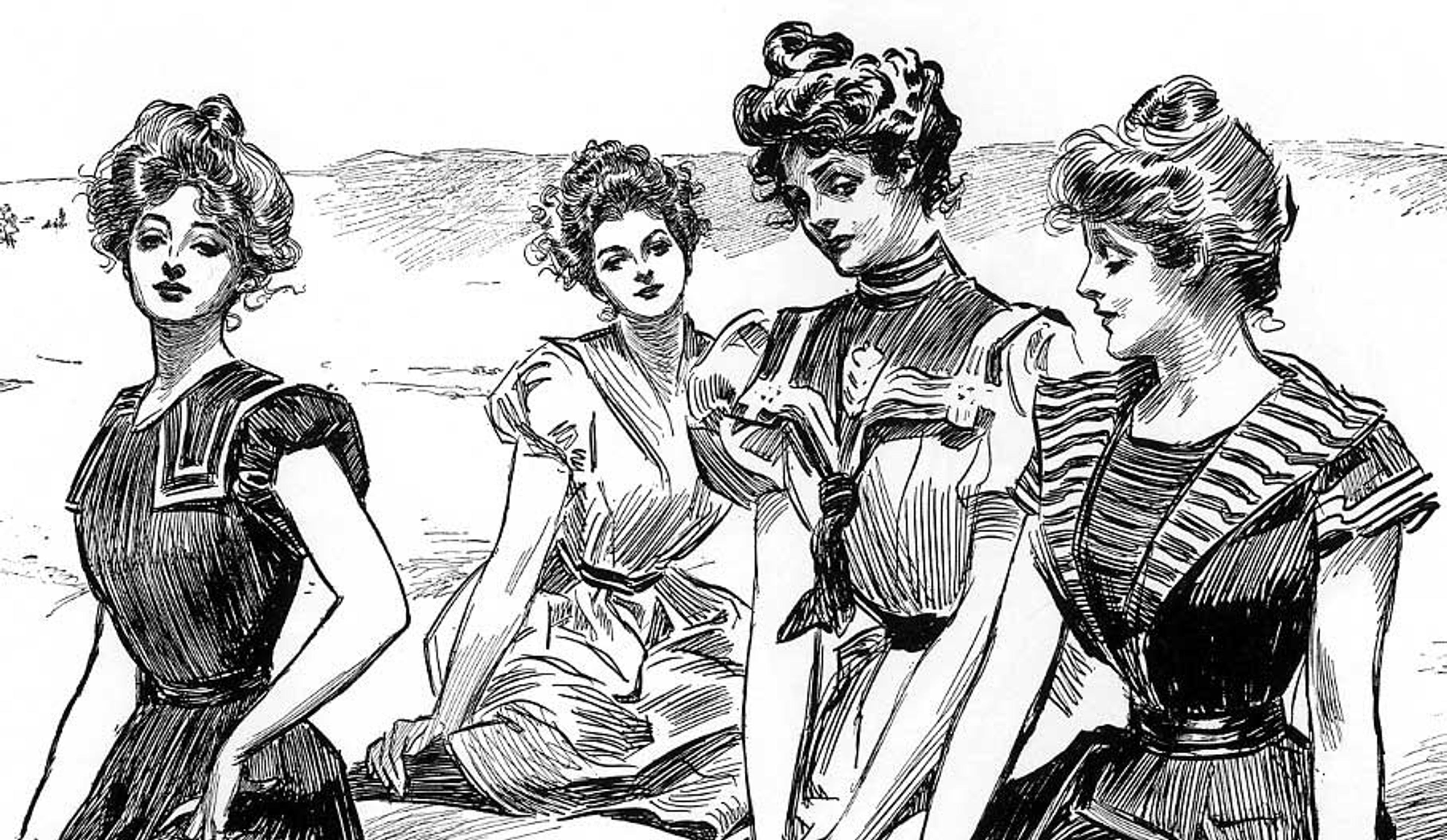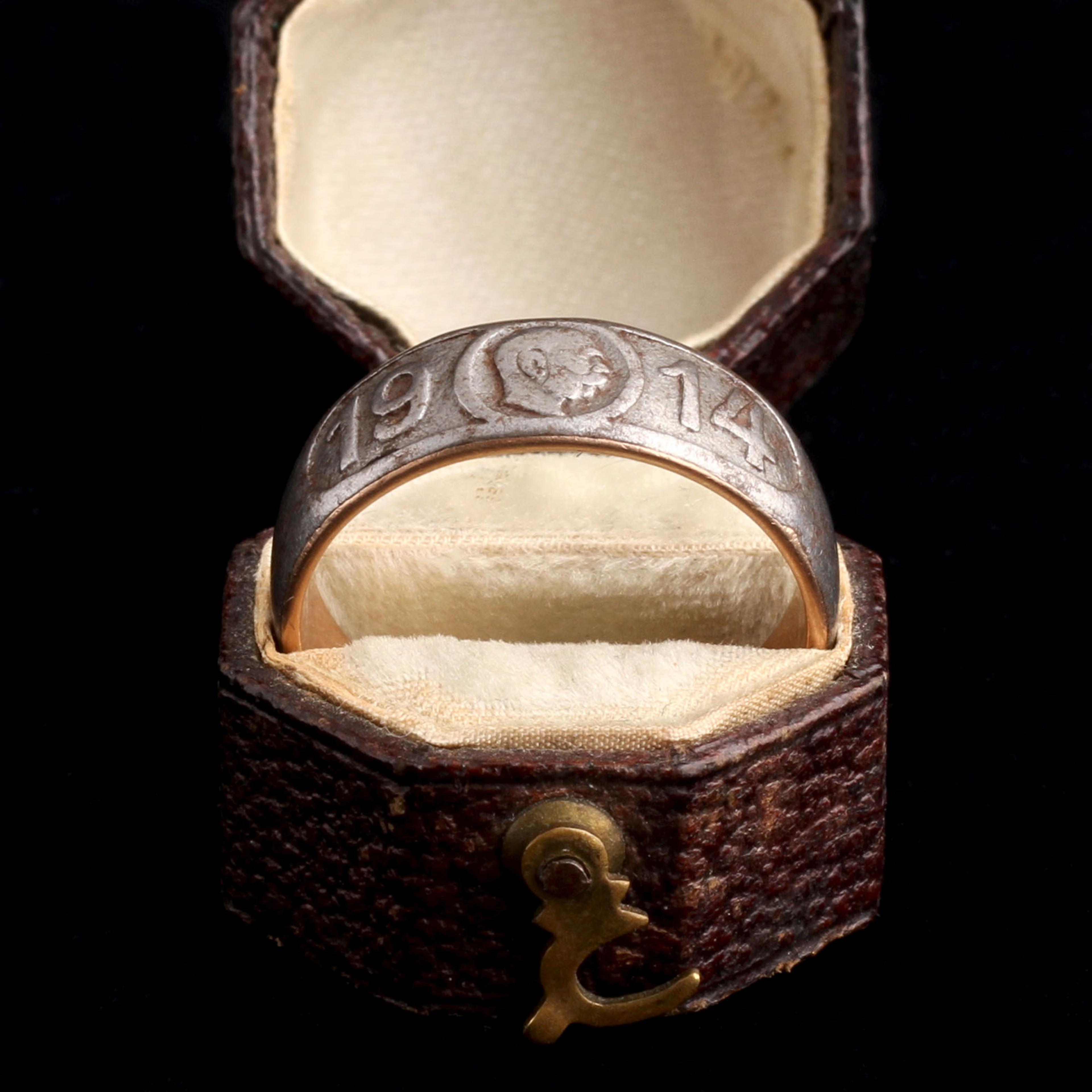The jewelry we call "Berlin iron" was produced as part of the gold-for-iron campaign that began in 1813. To fund the Prussian effort to repel the forces of Napoleon, citizens were urged to donate their gold to the state and were given a piece of lacquered iron jewelry in return. The drive was so successful that the Prussian war chests were filled, but also the wearing of gold jewelry became a social faux pas - unseemly and unpatriotic. As a result, jewelers began to sell tons of the distinctive black Berlin iron jewelry. (Of course lots of people just hid their gold 'till the war was over.) The gold-for-iron campaign was briefly revived during the first world war with less success. This piece is from that German campaign, and is lined with gold (perhaps after the war?) so as not to tarnish the finger. "ANNY" is engraved within.
thedetails
- Materials
14k gold lining (tests), iron
- Age
c. 1914
- Condition
Very good - a few spots of oxidation
- Size
8.25, cannot be resized; 7mm head, 4.9mm shank
Need more photos?
Send us an email to request photos of this piece on a model.

Aboutthe
EdwardianEra
1900 — 1910
The jewelry tended toward airy lightness, often in the form of lacy filigree. The world was changing rapidly, but lots of the jewelry still reflected the Victorian ideals of decorum and femininity. Ancient Roman and Greek influences remained popular. “White” jewelry became popular as plentiful deposits of platinum were discovered in Russia and improved smelting technology made it possible for jewelers to work in the noble metal. Platinum was seldom used by jewelers in earlier years owing both to its scarcity and high melting point. The jewelry trade took advantage of its rigid strength to create opulent openwork settings for increasingly brilliant diamonds. The old European cut was perfected, rounder and squatter than old mine. This took stone-cutting one step closer to the mathematically perfect round brilliant cut, which is the most popular diamond cut today. The now-iconic square Asscher cut was patented in 1902. Hot on the heels of platinum, the alloy mixture that produces white gold was formulated and patented in 1915 in New York City. With Europe in the grip of WW1, the American jewelry industry was poised to become a world leader and innovator.
please note:Terms of Sale
Antiques can be returned unworn and in original condition within 10 days of delivery for an exchange or refund minus the cost of shipping. Once a piece has been altered, including ring re-sizing, it is FINAL SALE.



